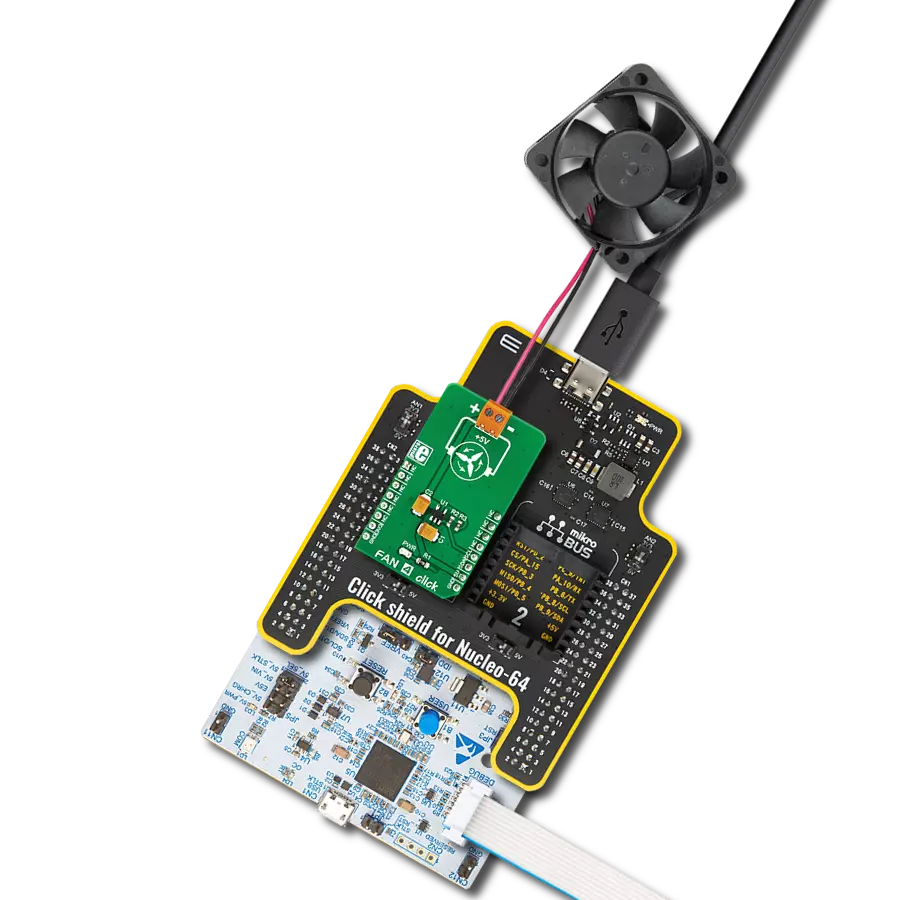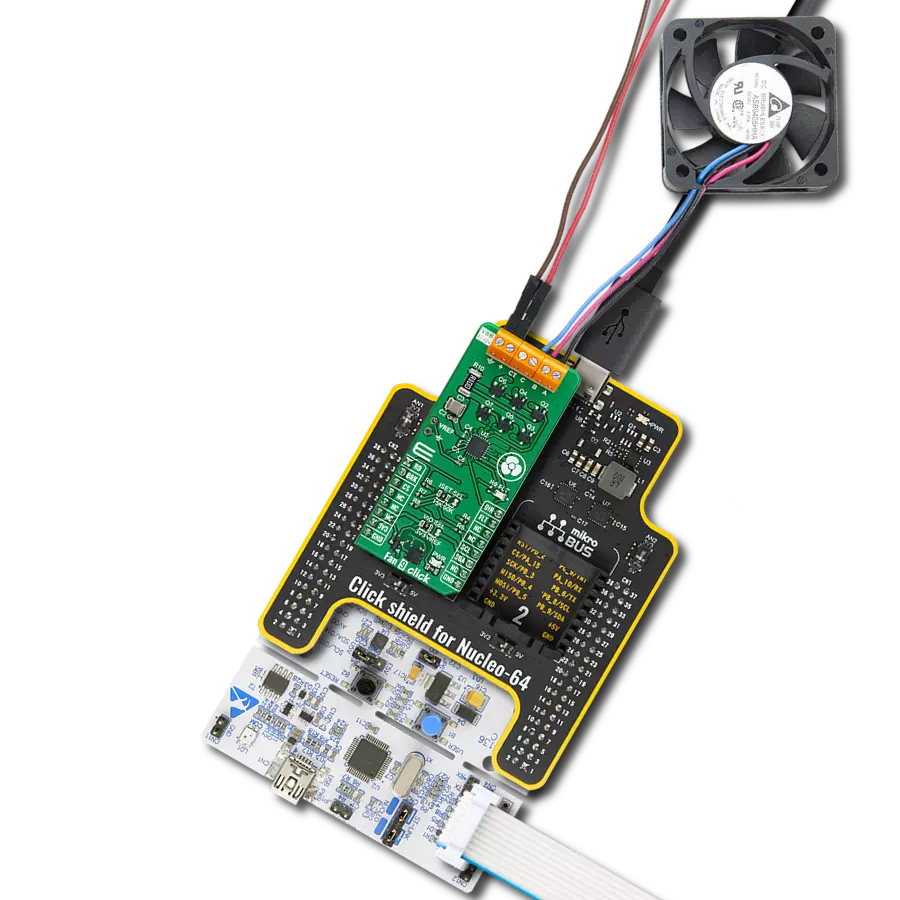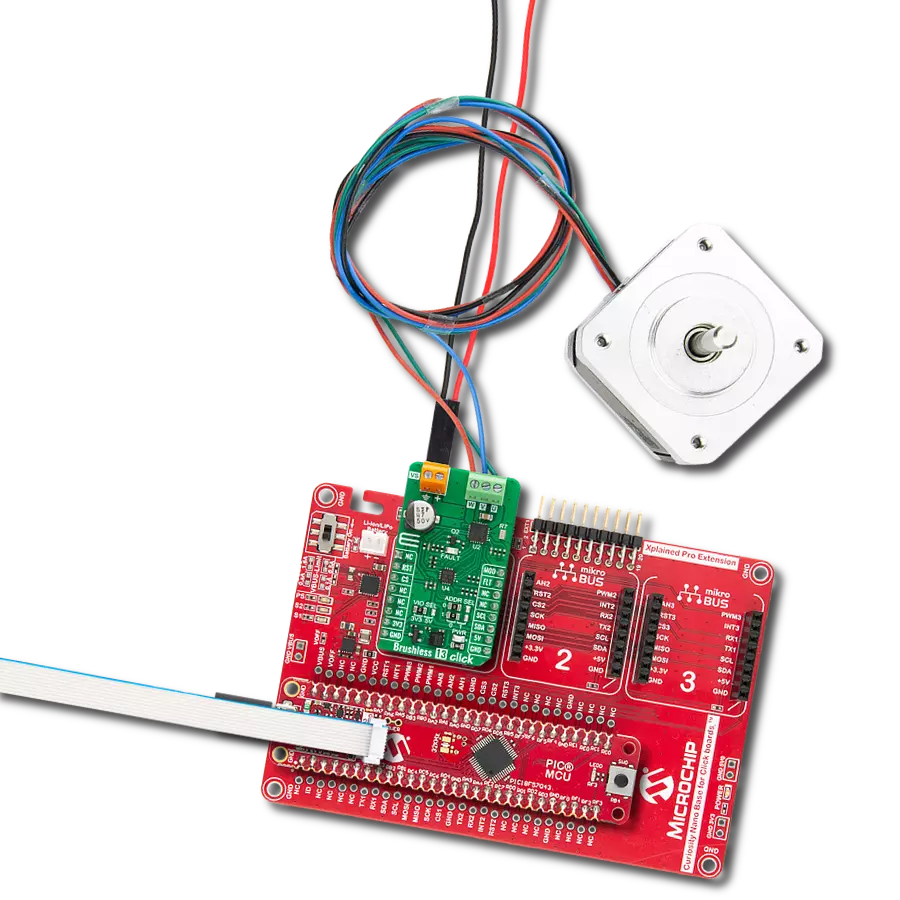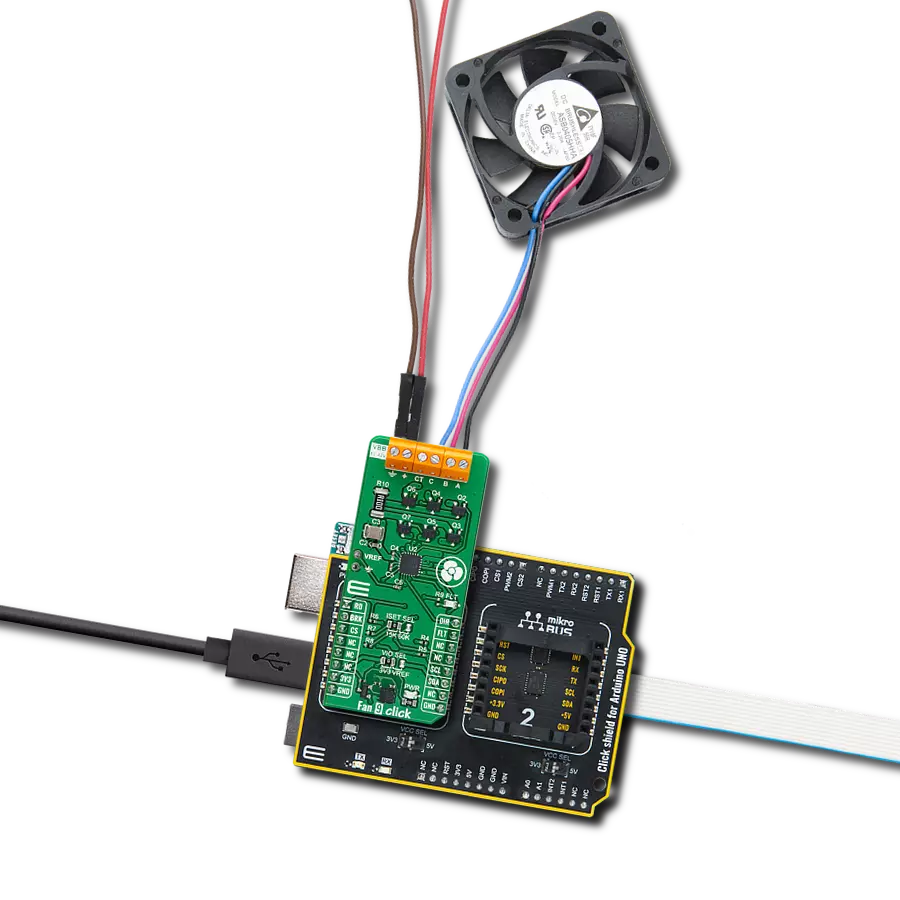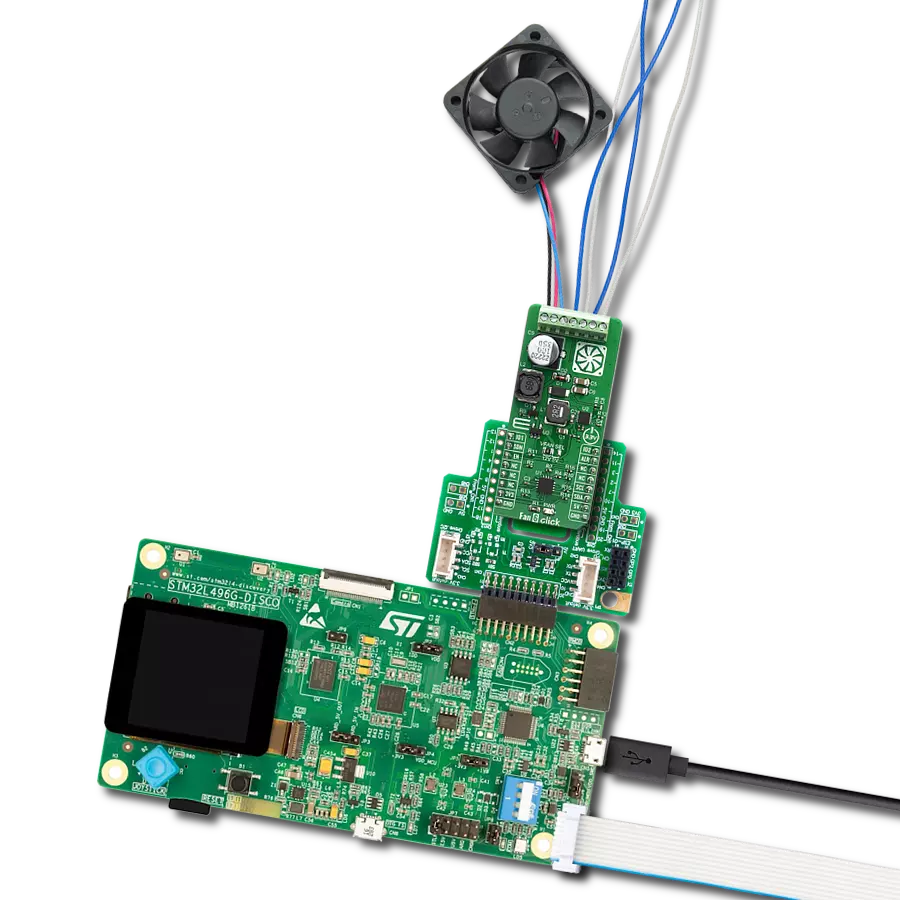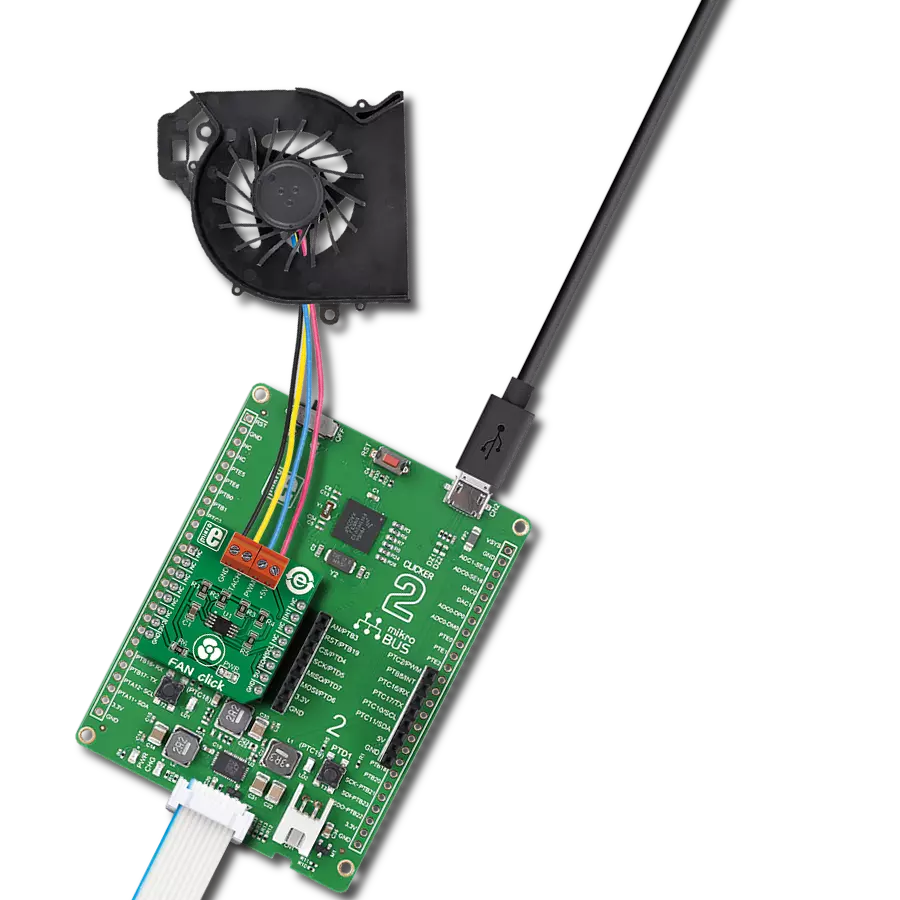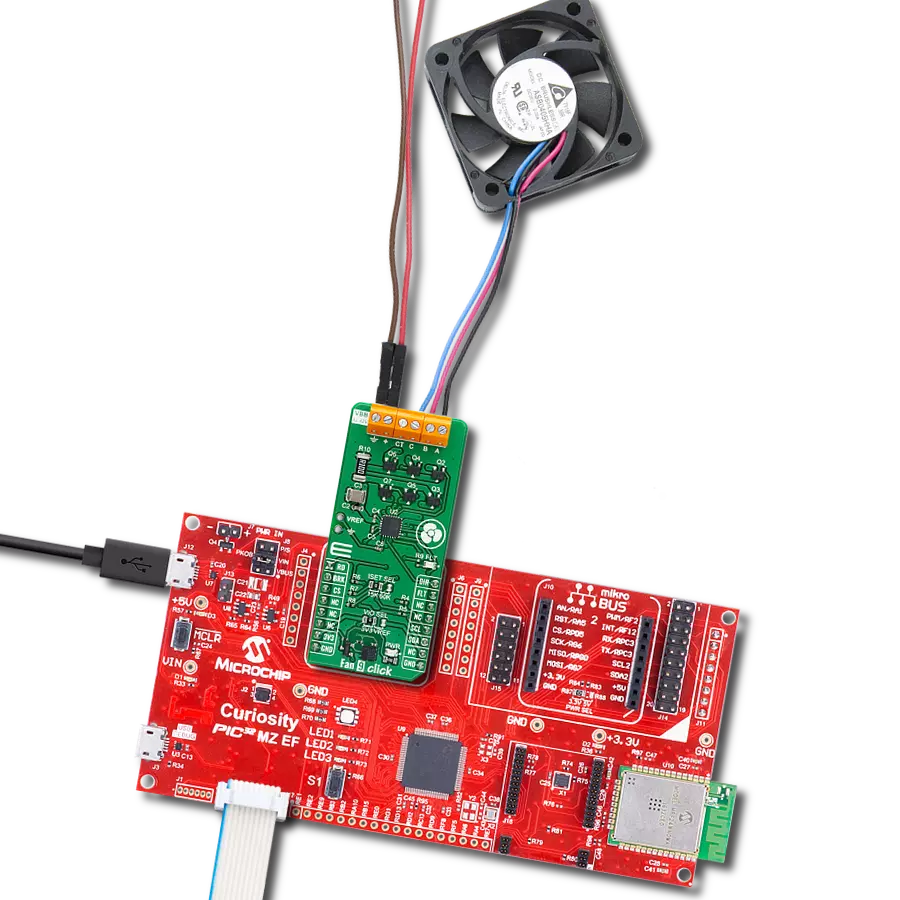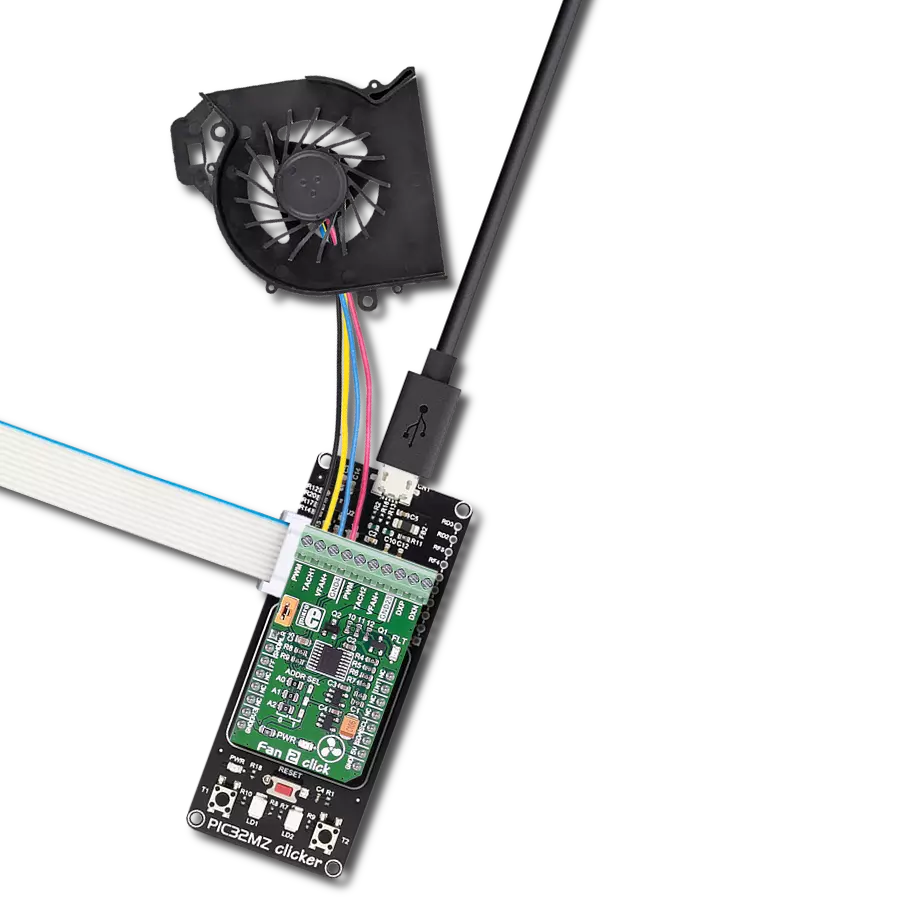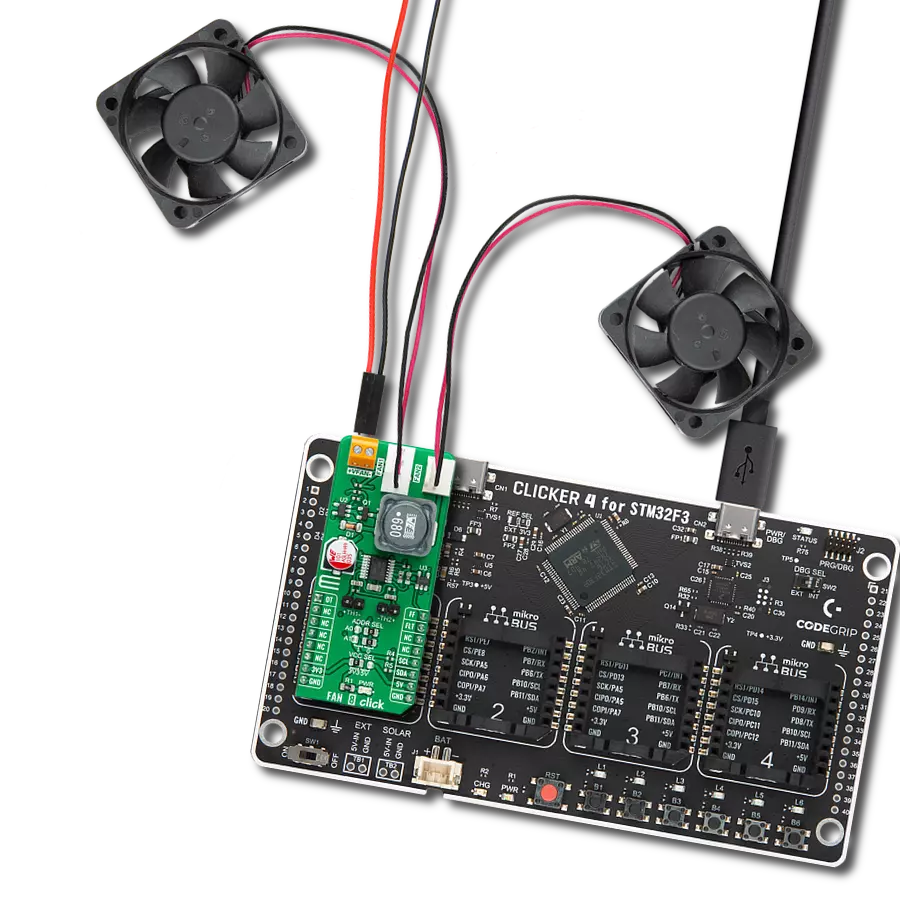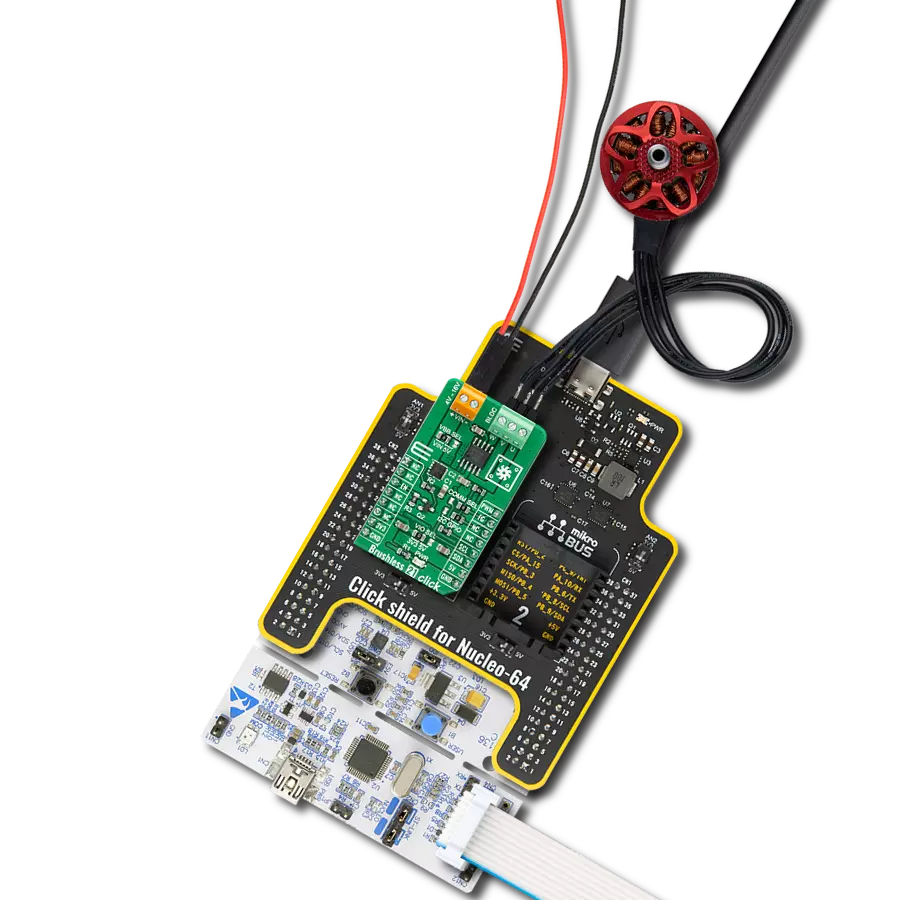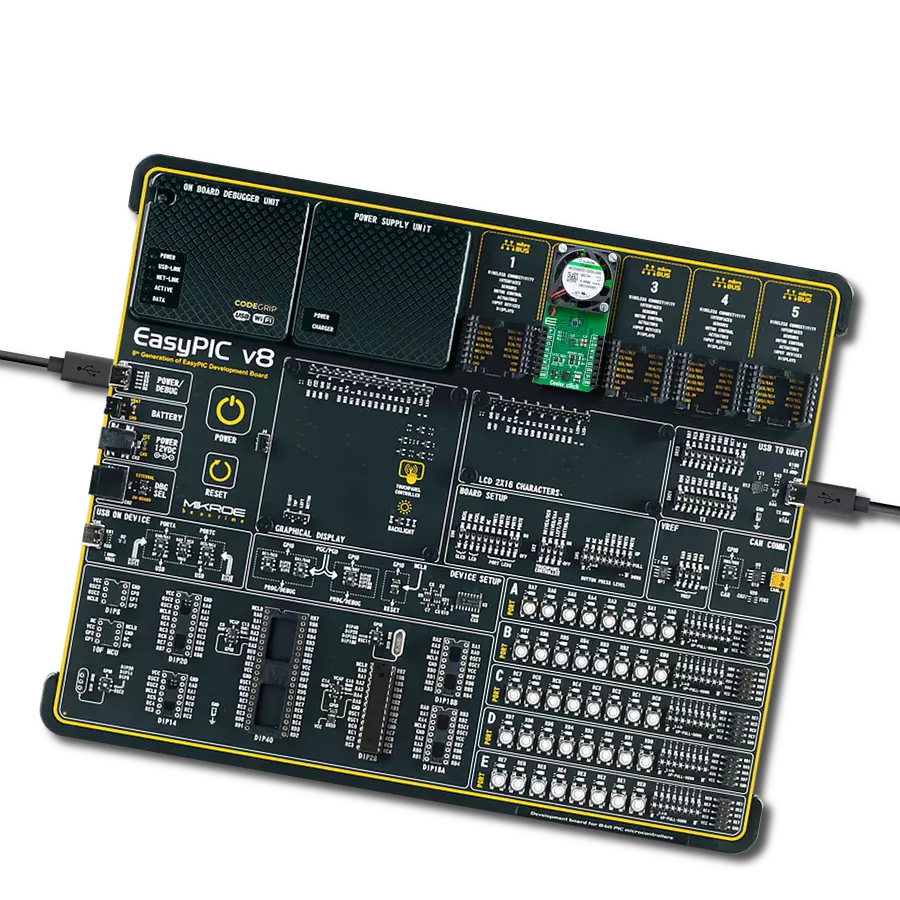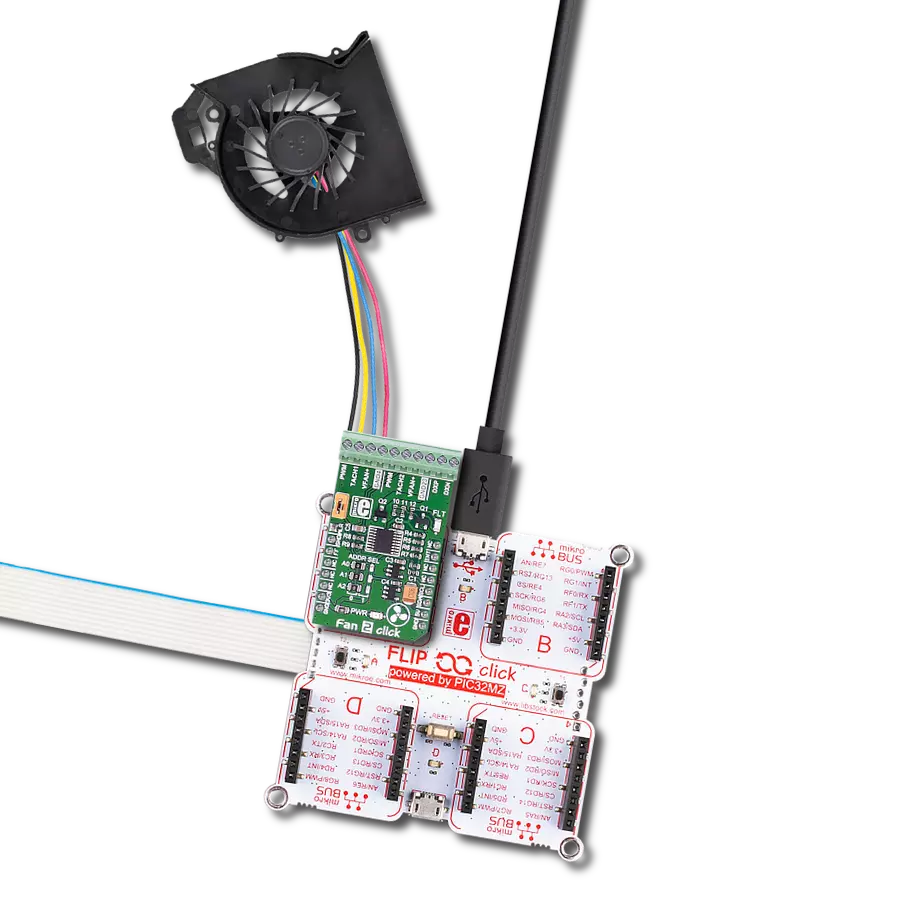Control high-speed, sensorless BLDC motors with precision, perfect for drones, cooling systems, and robotic applications
A
A
Hardware Overview
How does it work?
Brushless 18 Click is based on the ATmega8A, an 8-bit microcontroller from Microchip, offering a practical and efficient solution for controlling three-phase sensorless brushless motors (BLDC motors). These motors boast significant advantages over traditional DC motors. Their contactless design offers extended durability, superior torque, and high rotational speed, making them an excellent choice for lightweight, high-performance applications. These applications include propulsion systems for drones, where high speed, lightweight construction, and energy efficiency are critical; electronic cooling devices such as computer fans and industrial cooling systems that demand quiet and reliable operation; small household appliances like vacuum cleaners and air purifiers, and robotic mechanisms where their high torque and control accuracy are essential for smooth and precise movements. This Click board™ ensures precise control over BLDC motor operation and processes driving commands received via the PWM signal from the mikroBUS™
socket, enabling smooth and reliable motor control. Since the ATmega8A's output cannot directly drive the motor coils, it functions as the controller for a power circuit. This circuit consists of six high-performance N-channel MOSFETs, the STL120N4F6AG from STMicroelectronics, capable of efficiently switching power from an external source to the motor's stator coils. These MOSFETs can handle currents up to 50A, allowing the board to support demanding motor applications. The external power source can range from 0 to 40V, providing versatility in various use cases. The motor is connected via dedicated onboard terminals A, B, and C, ensuring secure and straightforward connections. This design, paired with robust components, allows Brushless 18 Click to deliver reliable performance and make it a go-to solution for high-speed motor-driven applications. A unique feature of this Click board™ is the inclusion of bootloader pins, which are unpopulated by default and designed for the onboard ATmega8A
microcontroller. These pins provide direct access to the microcontroller's bootloader functionality, enabling easy firmware updates and reprogramming without needing an external programmer. This feature simplifies development and testing processes, allowing users to quickly load and debug custom firmware directly on the Click board™, making it an efficient and developer-friendly solution for various applications. This Click board™ uses both power rails, 3.3V and 5V, with the 3.3V rail dedicated exclusively to the ClickID functionality, while the 5V rail powers all other components, including the onboard ATmega8A microcontroller. Due to this design, the board requires appropriate logic voltage level conversion when interfacing with external MCUs operating at different logic levels. Also, it comes equipped with a library containing functions and an example code that can be used as a reference for further development.
Features overview
Development board
PIC18F57Q43 Curiosity Nano evaluation kit is a cutting-edge hardware platform designed to evaluate microcontrollers within the PIC18-Q43 family. Central to its design is the inclusion of the powerful PIC18F57Q43 microcontroller (MCU), offering advanced functionalities and robust performance. Key features of this evaluation kit include a yellow user LED and a responsive
mechanical user switch, providing seamless interaction and testing. The provision for a 32.768kHz crystal footprint ensures precision timing capabilities. With an onboard debugger boasting a green power and status LED, programming and debugging become intuitive and efficient. Further enhancing its utility is the Virtual serial port (CDC) and a debug GPIO channel (DGI
GPIO), offering extensive connectivity options. Powered via USB, this kit boasts an adjustable target voltage feature facilitated by the MIC5353 LDO regulator, ensuring stable operation with an output voltage ranging from 1.8V to 5.1V, with a maximum output current of 500mA, subject to ambient temperature and voltage constraints.
Microcontroller Overview
MCU Card / MCU
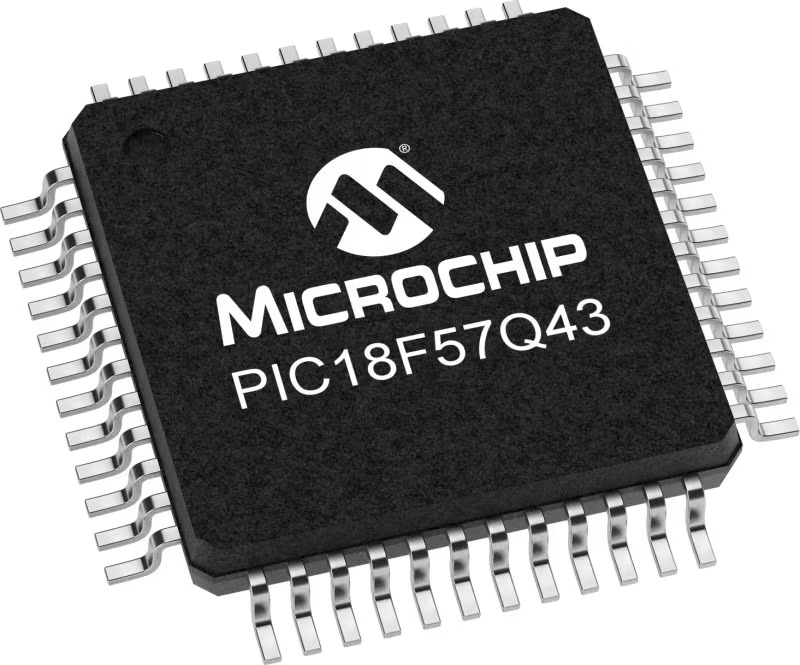
Architecture
PIC
MCU Memory (KB)
128
Silicon Vendor
Microchip
Pin count
48
RAM (Bytes)
8196
You complete me!
Accessories
Curiosity Nano Base for Click boards is a versatile hardware extension platform created to streamline the integration between Curiosity Nano kits and extension boards, tailored explicitly for the mikroBUS™-standardized Click boards and Xplained Pro extension boards. This innovative base board (shield) offers seamless connectivity and expansion possibilities, simplifying experimentation and development. Key features include USB power compatibility from the Curiosity Nano kit, alongside an alternative external power input option for enhanced flexibility. The onboard Li-Ion/LiPo charger and management circuit ensure smooth operation for battery-powered applications, simplifying usage and management. Moreover, the base incorporates a fixed 3.3V PSU dedicated to target and mikroBUS™ power rails, alongside a fixed 5.0V boost converter catering to 5V power rails of mikroBUS™ sockets, providing stable power delivery for various connected devices.
Used MCU Pins
mikroBUS™ mapper
Take a closer look
Click board™ Schematic

Step by step
Project assembly
Track your results in real time
Application Output
1. Application Output - In Debug mode, the 'Application Output' window enables real-time data monitoring, offering direct insight into execution results. Ensure proper data display by configuring the environment correctly using the provided tutorial.

2. UART Terminal - Use the UART Terminal to monitor data transmission via a USB to UART converter, allowing direct communication between the Click board™ and your development system. Configure the baud rate and other serial settings according to your project's requirements to ensure proper functionality. For step-by-step setup instructions, refer to the provided tutorial.

3. Plot Output - The Plot feature offers a powerful way to visualize real-time sensor data, enabling trend analysis, debugging, and comparison of multiple data points. To set it up correctly, follow the provided tutorial, which includes a step-by-step example of using the Plot feature to display Click board™ readings. To use the Plot feature in your code, use the function: plot(*insert_graph_name*, variable_name);. This is a general format, and it is up to the user to replace 'insert_graph_name' with the actual graph name and 'variable_name' with the parameter to be displayed.

Software Support
Library Description
This library contains API for Brushless 18 Click driver.
Key functions:
brushless18_throttle_calib- This function performs the ESC throttle calibration.brushless18_drive_motor- This function drives the motor at the selected speed and direction.
Open Source
Code example
The complete application code and a ready-to-use project are available through the NECTO Studio Package Manager for direct installation in the NECTO Studio. The application code can also be found on the MIKROE GitHub account.
/*!
* @file main.c
* @brief Brushless 18 Click example
*
* # Description
* This example demonstrates the use of the Brushless 18 Click board by driving the
* motor in both directions at different speeds.
*
* The demo application is composed of two sections :
*
* ## Application Init
* Initializes the driver and calibrates the Click board.
*
* ## Application Task
* Changes the motor speed every 500 milliseconds with steps of 5%.
* At the minimal speed, the motor switches direction. Each step will be logged
* on the USB UART where you can track the program flow.
*
* @note
* The theoretical maximal PWM Clock frequency for this Click board is 500 Hz.
* The default PWM Clock frequency is set to 400 Hz. To achieve such a low frequency,
* the user will probably need to decrease the MCU's main clock frequency in
* the Setup MCU Settings.
*
* @author Stefan Filipovic
*
*/
#include "board.h"
#include "log.h"
#include "brushless18.h"
static brushless18_t brushless18;
static log_t logger;
void application_init ( void )
{
log_cfg_t log_cfg; /**< Logger config object. */
brushless18_cfg_t brushless18_cfg; /**< Click config object. */
/**
* Logger initialization.
* Default baud rate: 115200
* Default log level: LOG_LEVEL_DEBUG
* @note If USB_UART_RX and USB_UART_TX
* are defined as HAL_PIN_NC, you will
* need to define them manually for log to work.
* See @b LOG_MAP_USB_UART macro definition for detailed explanation.
*/
LOG_MAP_USB_UART( log_cfg );
log_init( &logger, &log_cfg );
log_info( &logger, " Application Init " );
// Click initialization.
brushless18_cfg_setup( &brushless18_cfg );
BRUSHLESS18_MAP_MIKROBUS( brushless18_cfg, MIKROBUS_1 );
if ( PWM_ERROR == brushless18_init( &brushless18, &brushless18_cfg ) )
{
log_error( &logger, " Communication init." );
for ( ; ; );
}
if ( BRUSHLESS18_ERROR == brushless18_throttle_calib ( &brushless18 ) )
{
log_error( &logger, " Throttle calibration." );
for ( ; ; );
}
log_info( &logger, " Application Task " );
}
void application_task ( void )
{
static uint8_t direction = BRUSHLESS18_DIRECTION_CW;
static int8_t speed = BRUSHLESS18_SPEED_MIN;
static int8_t speed_step = 5;
brushless18_drive_motor ( &brushless18, direction, speed );
log_printf( &logger, " Direction: %s\r\n",
( char * ) ( BRUSHLESS18_DIRECTION_CW == direction ? "CW" : "CCW" ) );
log_printf( &logger, " Speed: %u%%\r\n\n", ( uint16_t ) speed );
Delay_ms ( 500 );
speed += speed_step;
if ( speed > BRUSHLESS18_SPEED_MAX )
{
speed_step = -speed_step;
speed += speed_step;
speed += speed_step;
}
else if ( speed < BRUSHLESS18_SPEED_MIN )
{
speed_step = -speed_step;
speed += speed_step;
direction ^= 1;
Delay_ms ( 1000 );
}
}
int main ( void )
{
/* Do not remove this line or clock might not be set correctly. */
#ifdef PREINIT_SUPPORTED
preinit();
#endif
application_init( );
for ( ; ; )
{
application_task( );
}
return 0;
}
// ------------------------------------------------------------------------ END
Additional Support
Resources
Category:Brushless




















